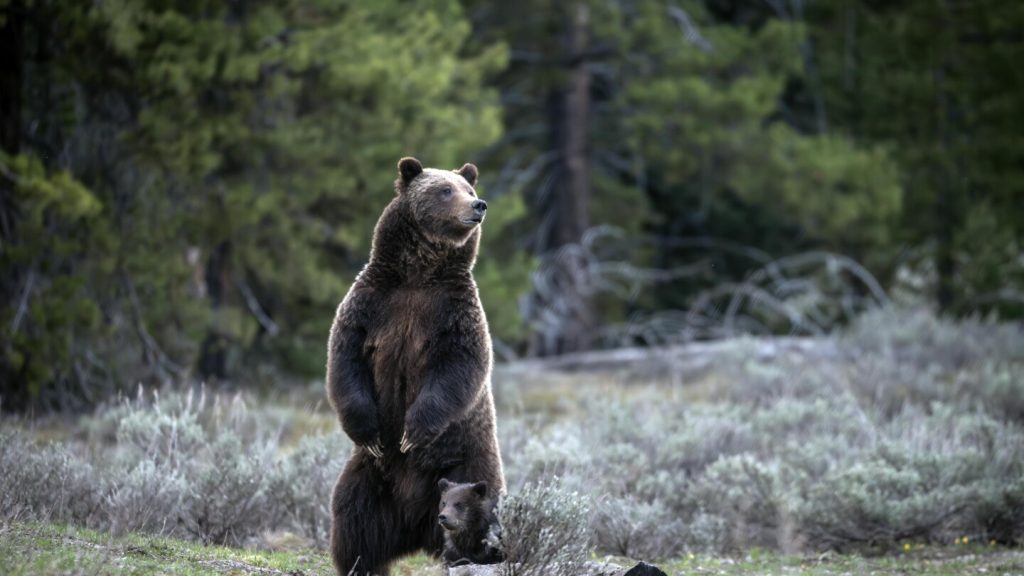The tragic death of a famous grizzly bear, known as No. 399, has left wildlife enthusiasts and conservationists devastated. The 28-year-old bear, the oldest known reproducing female grizzly in the Yellowstone ecosystem, was struck by a vehicle on a highway in Snake River Canyon in western Wyoming. No. 399 was often seen near roads in Grand Teton National Park, drawing crowds of visitors who admired her resilience and ability to reproduce into old age. The bear had 18 known cubs in eight litters over the years, making her a beloved figure in the region.
Named for the identity tag affixed to her ear by researchers, No. 399 was a symbol of strength and survival in the Yellowstone ecosystem. Scientists speculate that her behavior of being near roads kept male grizzlies at a distance to protect her cubs. Her death has sparked an outpouring of grief from those who admired and followed her through the years. No. 399 had become an icon and ambassador for her species, with fans all over the world expressing their devastation at her passing.
The tragedy highlights the ongoing conflict over grizzly bear management in the region. State officials have sought control over grizzlies from the U.S. Fish and Wildlife Service, arguing that the bear population has rebounded beyond the point of being at risk. Conservation groups, however, warn that climate change threatens the bears’ food sources, such as whitebark pine cones. The Yellowstone region is now home to around 1,000 grizzlies, which remain federally protected but have faced challenges in recent years due to political and court decisions regarding their status.
The death of No. 399 also underscores the dangers that wildlife face in areas where their habitats intersect with human activities. Vehicle collisions are a significant threat to grizzlies in the region, with an average of three bears killed annually in such incidents. No. 399 was the second grizzly to be killed by a vehicle in the area this year, highlighting the need for greater awareness and precautions to protect wildlife. The loss of such a beloved bear serves as a reminder of the fragility of these iconic species and the importance of conservation efforts to ensure their survival.
Wildlife officials expressed their condolences for No. 399’s passing and acknowledged the impact her death has had on the community. The driver involved in the collision was unharmed, but the fate of the yearling cub that was with the grizzly remains uncertain. The incident has sparked a conversation about the need for better measures to protect both wildlife and humans in areas where they coexist. As the legacy of No. 399 lives on in the memories of those who admired her, efforts to preserve and protect grizzly bears in the Yellowstone ecosystem continue to be a priority for conservationists and wildlife advocates.


